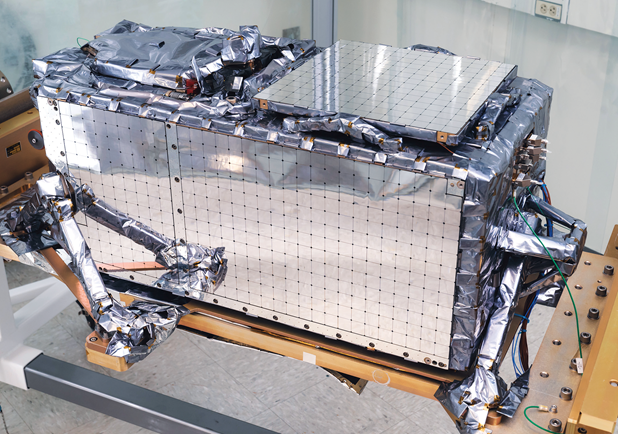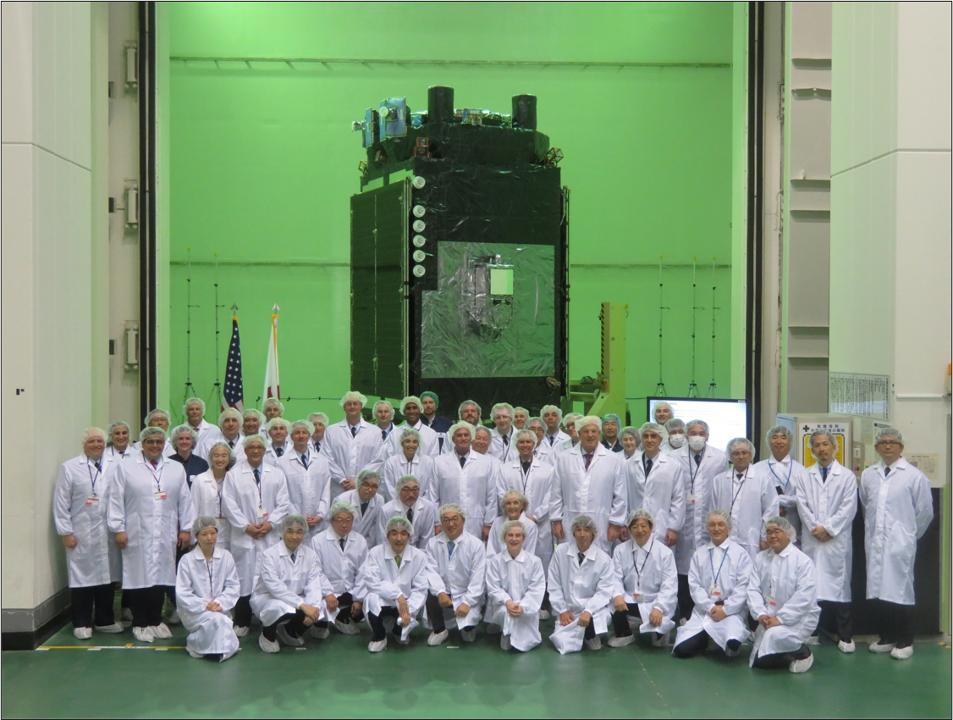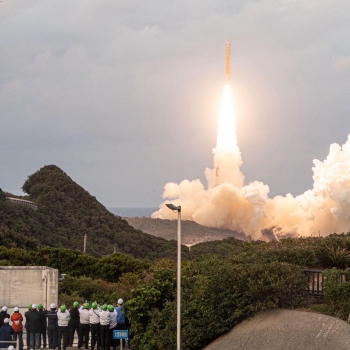Newly launched Space Force optical sensing system will improve space domain awareness in collaboration with Japan
In early February, the first of two space domain awareness (SDA) payloads, called the QZS6-HP1, launched from Tanegashima, Japan. Recently, that payload collected its first imaging data, a moment known as first light. Sponsored by the United States Space Force (USSF), MIT Lincoln Laboratory designed, built, and delivered the two payloads as a part of a United States and Japanese partnership program called the Quasi-Zenith Satellite System Hosted Payload (QZSS-HP). The program demonstrates a shared commitment to increasing space partnerships in alignment with both allies' national space policies and contributes to integrated deterrence and international security. Throughout the program, the Laboratory worked side-by-side with the USSF, Japan's National Space Policy Secretariat, and the Mitsubishi Electric Corporation.
For the past few decades, satellite launches across the globe have steadily increased as governments and private commercial companies initiate and progress their space-related activities, creating a more crowded space environment. Both the United States and Japan are interested in fortifying SDA within the crowded geosynchronous orbit (GEO) space. This international program began in 2019 as a way to meet this need by pairing a U.S. SDA sensor with the ongoing Japanese QZSS program. The QZSS is Japan's domestically engineered and manufactured position, navigation, and timing space system, designed for users in Japan and currently augmenting the U.S. Global Positioning System.
The USSF engaged Lincoln Laboratory for this program because of its extensive experience in developing SDA sensors, particularly for the ORS-5/SensorSat satellite, which launched in 2017. SensorSat is a small, low-cost alternative to current U.S. capabilities in detecting and tracking GEO satellites. The QZSS payloads leverage SensorSat's compact optical design that allows their sensors to passively survey the sky with high performance. Unlike SensorSat, however, which sends its collected data to a ground system for processing, the Laboratory's QZSS payloads accomplish the majority of their data processing on-orbit. This alternative processing approach reduces the size of the downlinked data by three orders of magnitude, making it an enabling architecture for bandwidth-constrained missions.
"The payload's passive searching offloads other SDA assets by providing continuous monitoring, which creates a more resilient space architecture," says Ashley Long, the Laboratory's program manager for QZSS-HP. These satellites will deliver near-real-time data to the U.S. Space Surveillance Network.

The second QZSS payload has been integrated onto Japan's QZS-7 satellite and is expected to launch in late 2025. For QZS6-HP1, the Lincoln Laboratory team is now conducting on-orbit testing.
Emily Clements, who is a deputy manager for the program, says that reaching the first-light stage is a significant milestone. "For first light to succeed, every part of the system has to work, including the Laboratory-fabricated sensor and the payload's many supporting subsystems, as well as data interfaces with Japan and the U.S. ground systems receiving the data," she says. "This moment represents the culmination of years of hard work and international partnership, paving the way for more comprehensive SDA monitoring of GEO."
Over the next few months, the Laboratory team will refine sensor parameters based on on-orbit data to maximize performance. The team will then continue to support operations for the lifetime of the mission.
"While originally conceived to be a demonstration mission and a pathfinder for international collaboration, the QZSS-HP promises to provide strong operational utility for the United States," Long says. "Additionally, the payload design has been transferred to the government, allowing for similar payloads to be built and delivered, further extending the reach and impact of this mission."

